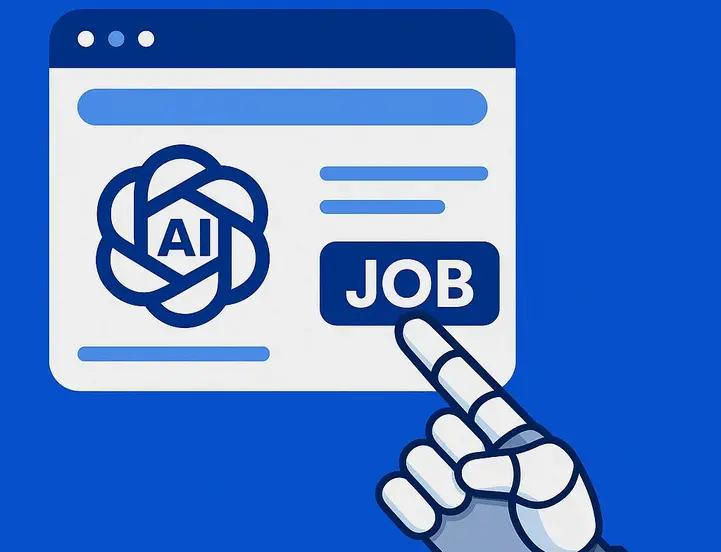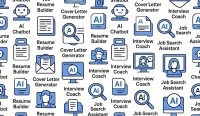Most people misuse AI and hurt their odds. The fix: draft your resume yourself first, then use AI as a brainstorm buddy and editor. Keep your voice, your facts, your metrics. Let AI accelerate clarity and tailoring—never fabricate.
Step 0: Write Your First Draft Yourself
Do not paste a job description and ask AI to invent a resume. You might get interviews, but you won’t pass live screens. Start with a clean template. Capture real achievements per role.
Step 1: Give AI A Persona
In ChatGPT or Claude, set context: “You are an expert resume writer with 20 years of experience helping [your field] professionals land roles at [target companies].” This steers tone toward concise, interview‑ready bullets.
Step 2: Convert Tasks Into Accomplishments
Hiring managers don’t want duties. They want outcomes. Use AI to flag tasks and suggest accomplishment framing—one role at a time.
Task → Accomplishment
- “Worked on chat feature” → “Built automated test tool for chat feature, enabling rapid releases and higher quality.”
Keep it true; AI can’t know what you actually did. Brainstorm your wins first—AI polishes after.
Step 3: Add Results (Answer “So What?”)
Great bullets show business or user impact. Ask AI for ways to surface outcomes: cost saved, time reduced, revenue gained, quality improved, risks mitigated.
Example: “Built automated test tool for chat feature, cutting manual QA 60% and accelerating release cadence from biweekly to weekly.”
Step 4: Quantify (Credible Numbers Win)
Aim to quantify ~60% of bullets. If you lack exacts, use defensible estimates you can explain: hours saved × hourly cost; error rate before/after; users impacted; ARR influenced.
Example: “Saved ~$100,000 annually by automating chat test cases (2 FTEs reallocated).”
Prompt: “How can I quantify results in these bullets?” Paste only one job’s bullets at a time.
Step 4: Quantify (Credible Numbers Win)
Numbers make your impact real. Quantify roughly 60% of your bullets — use credible, defensible metrics you can explain. Even estimates count when they reflect real outcomes: time saved, errors reduced, users reached, or revenue influenced. Credibility wins interviews; clarity wins offers.
Post Jobs & Hire Impact-Driven Talent →Step 5: Projects Section (When Switching Fields)
If you’re pivoting, relevant projects prove capability. Treat projects like experience: outcome → metric → how, with links.
Example: “Built FlutterFlow quotes app; 1,200+ downloads on Google Play; 4.6★ rating.” Use AI to tighten phrasing, not to invent traction.
Step 6: Objective vs. Professional Summary
New grads/early career: an objective can spotlight education + goals (≤3 lines). Experienced candidates: a professional summary (≤3 lines) distills scope, strengths, and signature wins. Use AI for a first pass, then rewrite to sound like you.
Step 7: Tailor For The Job (ATS Without Keyword Stuffing)
Paste the JD and ask AI to extract the top 15–20 skills/keywords. Include ~60% that you truly possess. Embed them inside outcome bullets or a lean skills line. Don’t chase a numeric “match score” at the expense of your best achievements—many JDs are incomplete or outdated.
Step 8: Final AI Check (Then Human Read‑Aloud)
Prompt: “Based on the JD and my updated resume, what’s missing to prove I can do this job well?” Apply useful suggestions, then read your resume aloud. If it doesn’t sound like you—or if any claim would be hard to defend—fix it.
Mini Prompt Bank
- “Identify which bullets read like tasks vs. accomplishments; suggest rewrites.”
- “Propose outcome metrics for these bullets; prioritize revenue, cost, time, quality.”
- “Extract top 20 JD keywords; map to my existing bullets, flag gaps.”
- “Tighten these bullets to ≤24 words while preserving metrics.”
- “Draft a 3‑line professional summary based on this experience; make it concrete.”
Common Mistakes To Avoid
- Letting AI invent experience or inflate scope.
- Chasing JD scores and deleting your strongest wins.
- Quantifying every bullet (overkill); aim for ~60%.
- Dense skills tables at the top; embed tools in context instead.
- One huge paste of your entire resume; work one role at a time.




